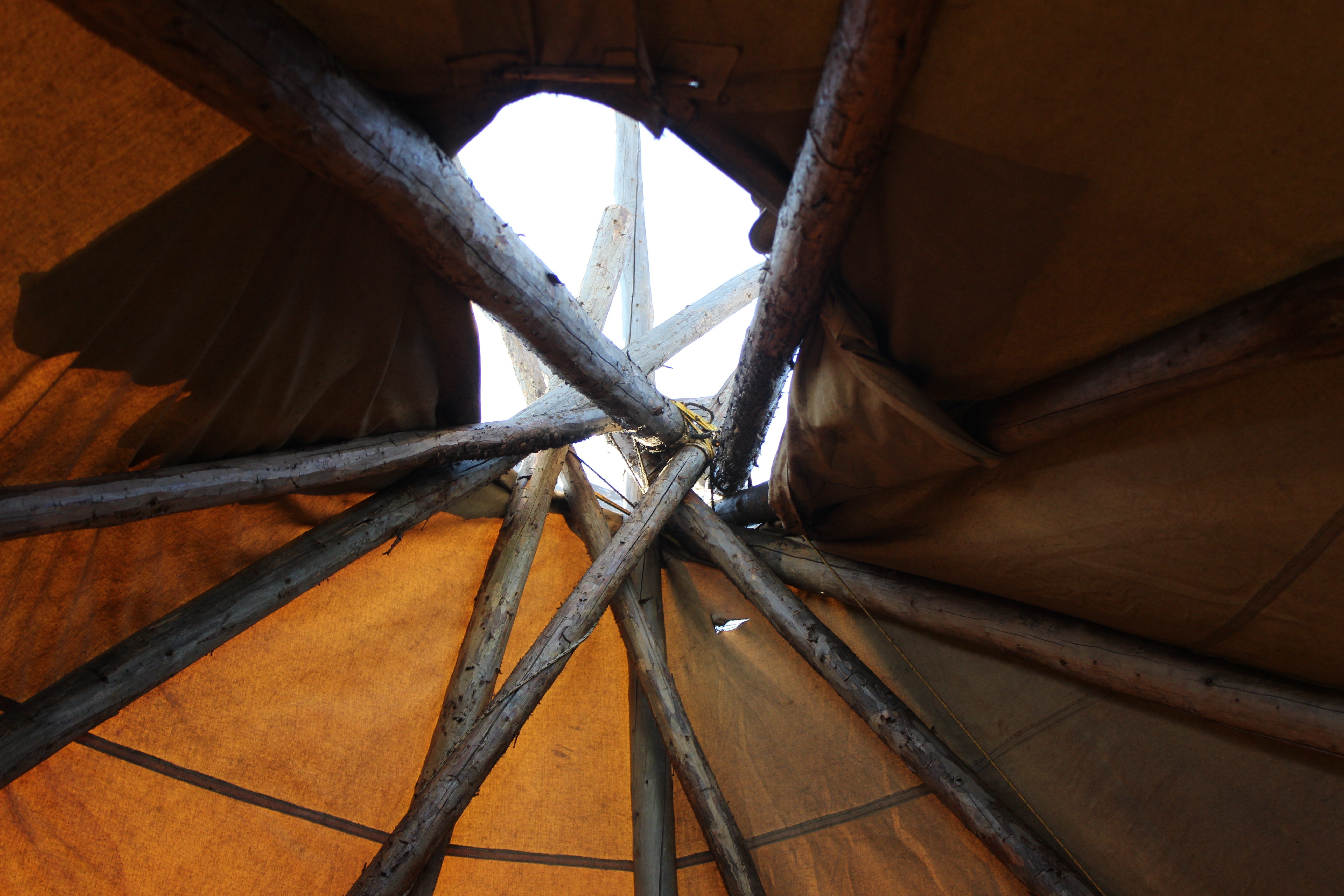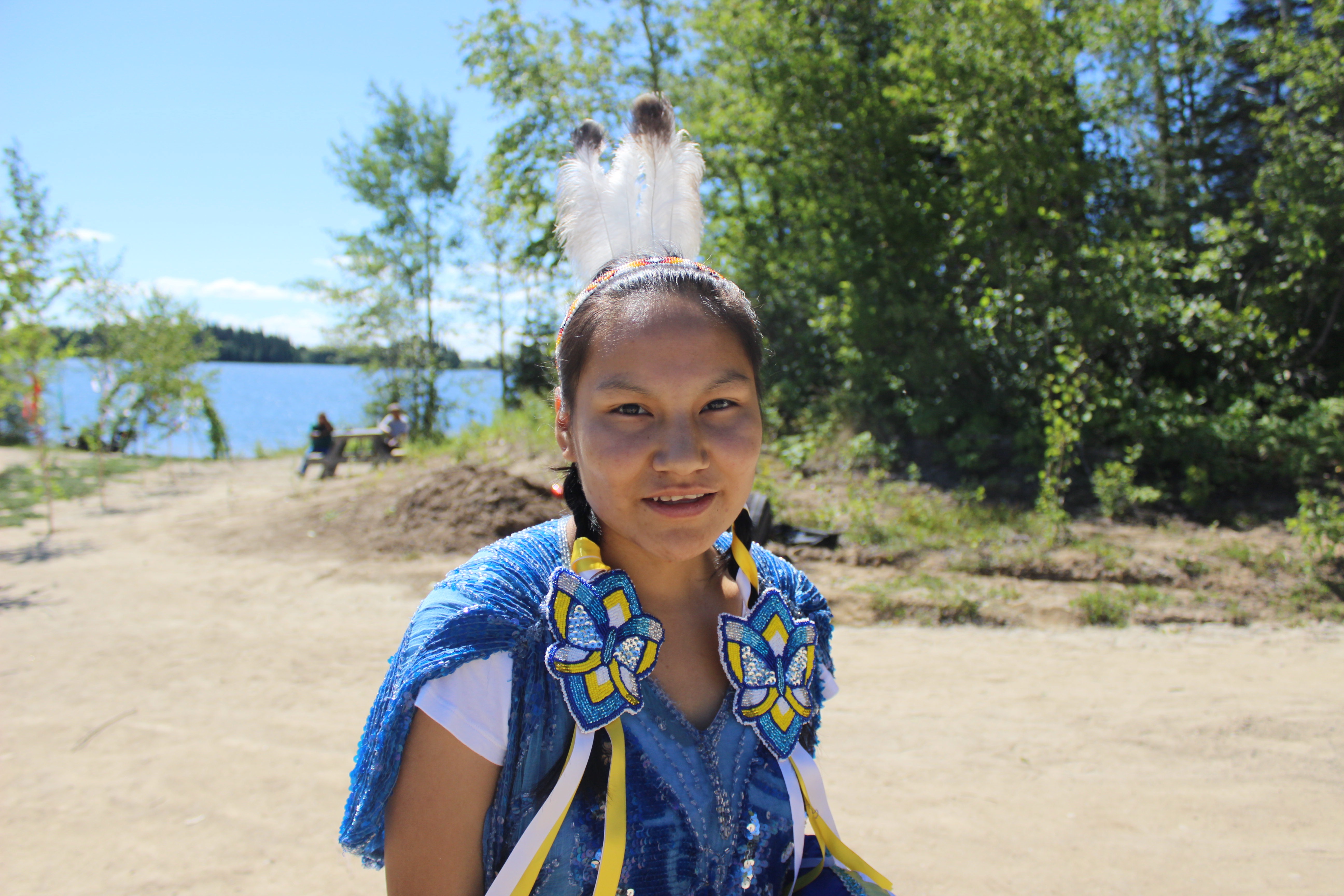
The sound of drums is original to the land but new for many of the young people living on it.
St. Theresa Point is one of 63 First Nation reserves located in the Canadian province of Manitoba. The reserve is part of a cluster of Island Lake communities distinguished from the others by its unique crossroads of church and tradition.
The community is connected to the mainland by an ice road and bush plane that carries passengers 289 air miles to the city of Winnipeg. "We're remote but not as far away from everything as you might think," notes Jodi Harper, father of three and an educator who recently graduated from the local University College of the North. While the geographic barrier is a surmountable one, meeting the cost of a two-way ticket can be a significant obstacle for low wage-earning residents.
But the cost to transport cargo is cheaper than purchasing goods on-reserve. "Many visitors see the prices at our store and become shocked by them. Everything we have is flown in, so it's very expensive."
Despite lacking access to emergency health services, chronic under-employment, and high living costs, migrations off-reserve are rare. According to the last census in 2011, about 80 percent of St. Theresa Point's population remain in the community.
Harper hasn't always lived on Island Lake, but doesn't intend to leave it again any time soon, despite the hardships.
"We're in the middle of our decolonization period and it shows. But things are especially difficult for an aboriginal person in the city. Everyone here knows that. People look at you differently. I don't want to go back there. There's no loneliness here. This is my home."
While the council helps plan community development, bringing in service projects and funding for new infrastructure, there are some urban amenities and comforts that the reserve never gets. "Our road grader went down so the potholes are really bad. I have no idea when or if it will ever be fixed," he said.
But road graders are low on the list of priorities. Elders seek different ways to bring youth into the community and improve their social outcomes.
Hazel Harper, Jodi's mother and regional coordinator for the university, advocates for Oji-Cree immersion programs and perspectives in education that reject the destructive influences of European systems of knowledge on aboriginal learners. She understands how it feels to go against a dominant or mainstream society, as well the benefits of deviating from assigned roles and expectations. "I was the first woman to take part in many of the ceremonies we use today. I was given the name Blue Heron. It was explained to me that blue herons stand very tall and alone in the water. Like a blue heron, I was by myself and standing with the other men."
Hazel and her husband Chris Harper embarked on a journey to rediscover traditional or aboriginal ceremonies from practicing elders and began to reintroduce them to St. Theresa Point in the late-1980s. "It was very divisive at first. A lot of our families stopped talking to us. They thought that what we were doing was at odds with the church. Initially, there was a lot of skepticism about it, but very slowly we started attracting more people."
Sectarian differences between reserves in the Island Lake region define them spatially and culturally. About 95 percent of St. Theresa Point identifies as Roman Catholic, but just across the channel, the United Methodist Church holds a strong and unwavering majority.
As a testament to the success of the Harpers' efforts to reintroduce traditional teachings, the annual Faith Family Retreat has attracted major attention from church leaders. In 2016, archbishops Richard Gagnon, Albert LeGatt, and Murray Chatlain visited the small fly-in reserve, recognizing and supporting indigenous customs that were prohibited only a century ago from public practice. The historic moment was celebrated by all in attendance. "I was frankly shocked that they actually came," an elder exclaimed. "It's the highest honor we could have received."
The archbishops arrived to fanfare and departed shortly after the Catholic Marian Retreat, a cultural camp devoted to St. Mary and her disciples. The holy men were present to bless the arrival of a sacred relic of St. Kateri.
Most in the community attribute healing to the embrace of a traditional identity, but are careful not to contradict church doctrine.
"I kept my religions apart as I walked the Red Path—that's what they call it when you go back—when a person who lives in white society decides to reclaim some of their ancestral roots, their ancestral being," says Elvin Flett. He recalls a story in his youth when he would visit the missionary theater and unwittingly celebrate John Wayne and his heroics against the film's Navajo fighters. "We used to cheer on the cavalry to come in and take out the Indians. We didn't know any better. We were kids," he said.
The changes that have spurred cultural rediscovery are still active, with many youth and elders just recently coming to embrace the customs of their ancestors. St. Theresa Point's progress in reintegration and holistic healing of the community has garnered widespread support.
With the annual retreats growing each year, more visitors decide to journey for the spiritual education that the elders of St. Theresa provide. It has become the first leg of the Red Path for wayward Oji-Cree learning how to grasp the recognition of their status as members of a vibrant nation, and many will trod this path as they confront their community's history.
"All of us have to decide how we want to get back," Flett says. "We must be proactive."










